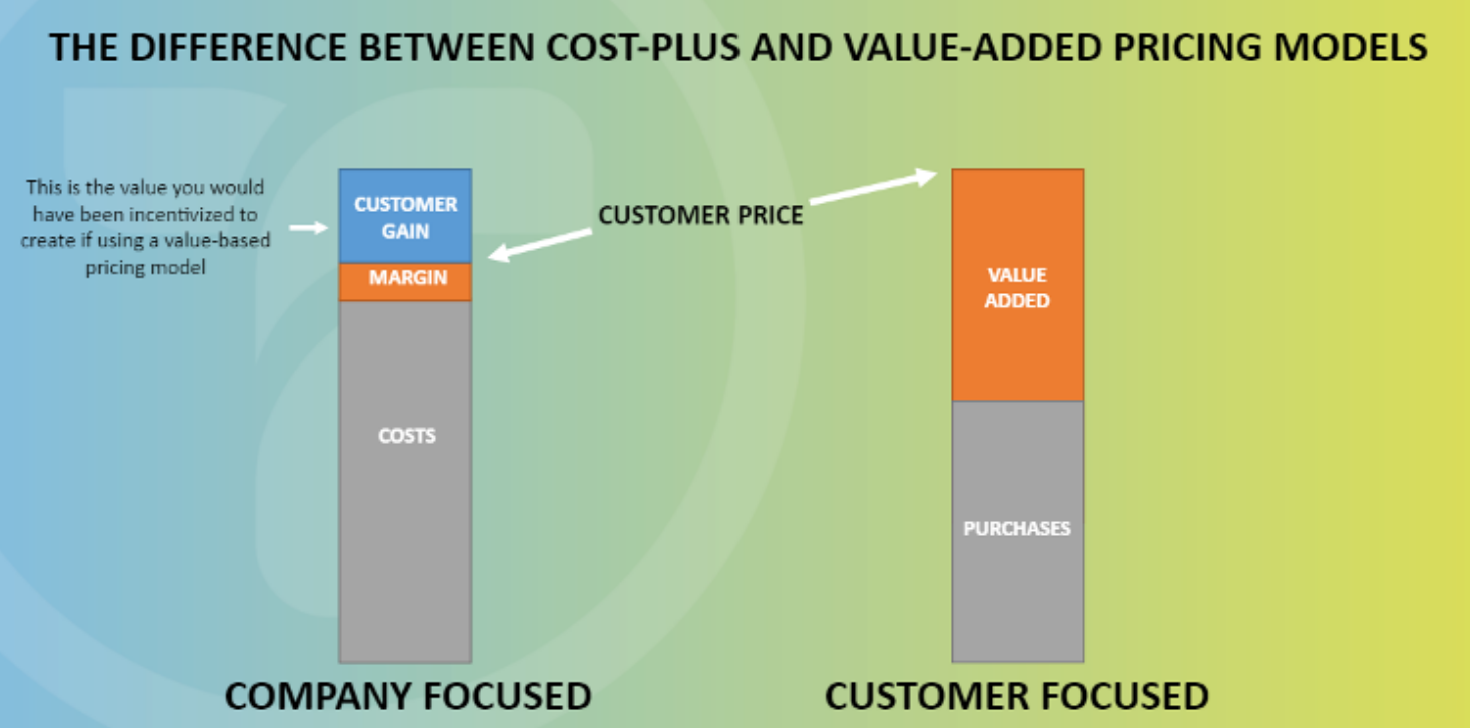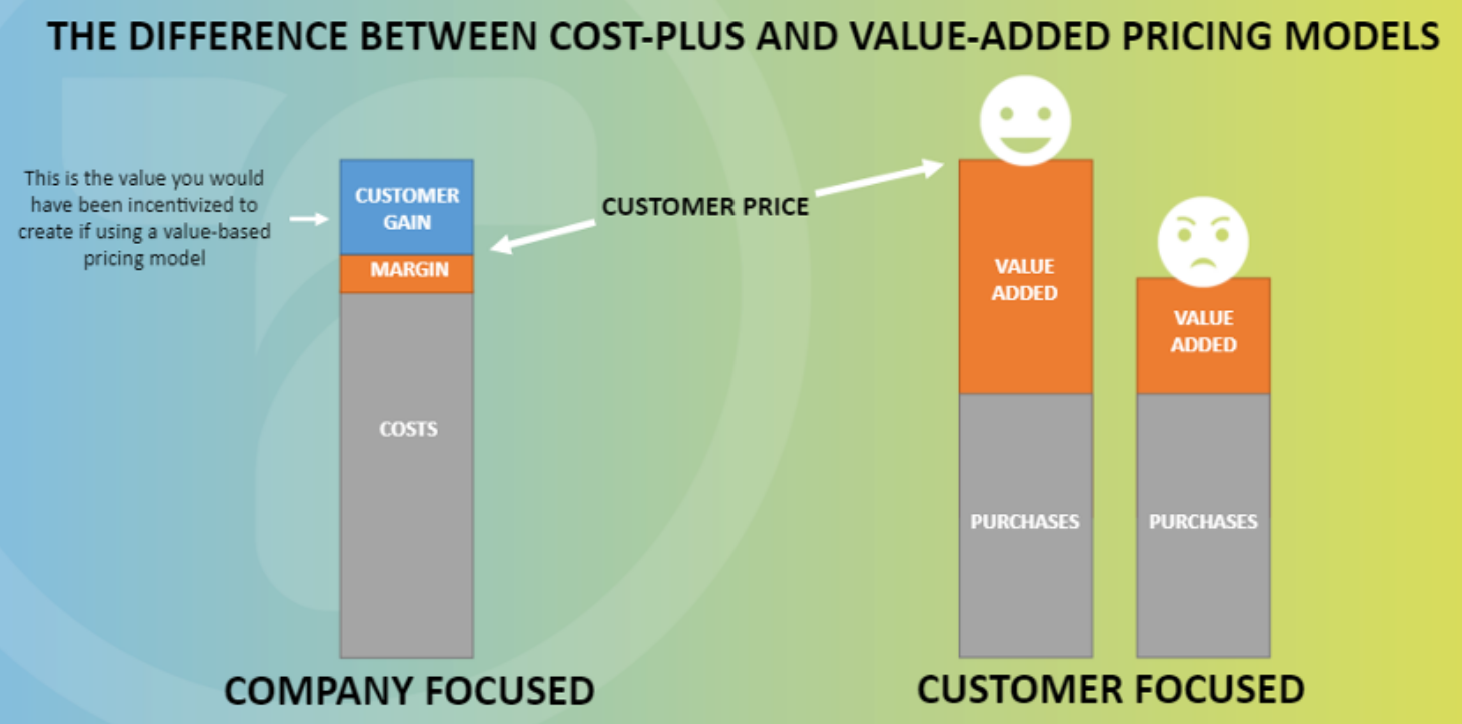Pricing is a topic that’s always being discussed in print – it’s an occupational hazard for anyone working in an industry that produces unique products almost every time they get an order. We often have discussions with our customers to try and help them answer questions such as: “Should I be charging more?” and “CAN I charge more?”. And this discussion pretty much always ends up turning to a debate about the downsides of a cost-based pricing approach, and the merits of a value-based method as an alternative.
What’s the difference between a cost-plus and value-based approach?

With a cost-plus pricing model, companies will start from the bottom by working out what it’s going to cost them, then simply add a margin on top. Seems pretty typical, I know, but the problem with this approach is that it removes the opportunity to charge more in situations where customers would pay more. Plus, if 2020 has taught us anything, it’s that our cost rates are not consistent. They change relative to how busy we are, and customers disappear, employee numbers fluctuate and paper prices rise.
Value-based pricing, however, is a very different thing. You only need to work out your purchases e.g. materials and outwork, for example, and then understand the value that your customers place on what you added to those materials to create the product.
I like to use the Primark vs Gucci handbag example to illustrate this idea. The labour and material costs for these items could be very similar, however the price difference between them is huge. This is because of the different markets they’re sold in, and the different value perceptions that the customers hold in these markets.

The graphic above shows the value that you could be losing by starting from a cost-plus base, with the happy face representing those customers who really see the value in your products and the sad face representing those who don’t.
So ask yourself, “Do we really want to be selling to those customers who don’t see the value in our products?”. I’m sure you’d much rather be selling to the companies full of happy faces, who feel like they’ve gained something from your product and have gotten great value for money?
We are too obsessed with costs in the printing industry
Back in the 90s I remember meeting a man named David Chapman, a consultant to the printing industry and author of ‘The Power of Added Value’. Even back then David was talking about the importance of using a valued based model for estimating print! But it just hasn’t been widely adopted by the industry, not to the extent that I believe it should be. I was once asked to present on this topic at a Heidelberg open house and at the end I was approached by a longstanding customer who revealed that this was the first time anyone had explained value-added to him. This was something I had thought was in the blood of every printing company out there, but that day I realized I was wrong.

The problem is that everyone in the industry (even us MIS providers), are too obsessed with costs. Many of my colleagues come from a long line of printing generations, and tell me that back in the day, they just used to work out the material cost for a job and then double it! But I also know that estimators go with their instincts too – I’ve seen them punching numbers into a calculator to decide on a cost-plus price, before then discounting that price because they know the customer or sector won’t pay any more for it. These people are using value-based pricing, they’re just calculating it with their gut.
It’s time to re-think your pricing approach
An old lecturer of mine once asked a very searching question - “What is the correct price for a job?” Everyone in the class had a stab at calculating this, working out percentages, and performing complex calculations, until eventually he stopped us all and revealed that the correct price is actually just the highest one you can get away with - Phil Dodge, Workflow Specialist, Tharstern.
I know moving away from cost-plus is a brave move to make, but there are companies out there who’ve made it and they’re now benefitting substantially from it. We’ve seen more than a few of our own customers who have re-evaluated their business in this way, deciding to sell to different markets, and are now seeing an increase in profitability and a decrease in production hours.
I hope I’ve planted a seed of interest about this topic. I've posted two follow up articles to this; The first is about how to go about calculating a value-based price for your products, and the second is about how you can identify those customers who will pay more for your products.